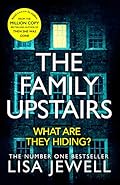Gallows Court by Martin Edwards has been on my radar since it was published last year. And I’ve read plenty of reviews full of praise for it, so my expectations were high as I began reading, especially as I’ve thoroughly enjoyed all of his other books that I’ve read, particularly his Lake District murder mysteries. Gallows Court, set in 1930s London, is a change of direction for Martin Edwards, born out of his fascination with that period in history and his love of Golden Age detective fiction. It is the first in a series; the next book, due out in March next year, is to be Mortmain Hall, a sequel to Gallows Court.

Blurb (Amazon):
London, 1930.
A headless corpse; an apparent suicide in a locked room; a man burned alive during an illusionist’s show in front of thousands of people. Scotland Yard is baffled by the sequence of ghastly murders unfolding across the city and at the centre of it all is mysterious heiress Rachel Savernake. Daughter of a grand judge, Rachel is as glamorous as she is elusive.
Jacob Flint, a tenacious young journalist eager to cover the gruesome crimes, is drawn into Rachel’s glittering world of wealth and power. But as the body count continues to rise, Jacob is convinced Rachel is harbouring a dark secret and he soon becomes part of a dangerous game that could leave him dancing at the end of the hangman’s rope if he pursues the truth.
My thoughts:
I think this must be the twistiest book I’ve read – there are twists and turns galore, my head was spinning as I read the first 100 pages. I had to stop when I realised that apart from Rachel and Jacob I had little idea of who anybody was, what they were doing and how they interacted. There are so many characters and the story is told in short sections moving rapidly from scene to scene and from one viewpoint to another. I had to go right back to the beginning – start again and this time concentrate much more on who was who and what they were up to.
Jacob Flint is constant throughout, but Rachel Savernack is not. I was never sure about her, what to think of her, or who she really was because it’s obvious that there is more to her than first meets the eye. The pressure never lets up – there is always tension and suspicion about who is telling the truth, and who is not who they appear to be. You just cannot believe anything as it’s full of illusions and tricks to baffle and mislead. Towards the end the fog lifted and I began to suspect the truth. It is certainly a challenging book and if you enjoy an intricately plotted murder mystery with plenty of suspense and intrigue then this is the book for you.
- Hardcover: 416 pages
- Publisher: Head of Zeus (6 Sept. 2018)
- Language: English
- ISBN-10: 1788546075
- ISBN-13: 978-1788546072
- Source: Library book
- Martin Edwards website.
- My rating: 4*
Reading challenge: The Virtual Mount TBR







 I’ll certainly be looking out for more of Lisa Jewell’s books to read.
I’ll certainly be looking out for more of Lisa Jewell’s books to read.